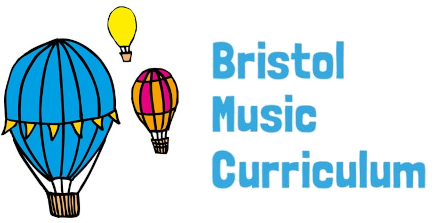Key Learning Objective: To compose a rhythmic ostinato inspired by engine sounds. Starter activity: Listening and response exercise based on the provided clip of Titanic’s engine audio. Identify a repeated rhythm that occurs over and over again, pupils to tap one of these rhythms out. Main activity: Collect words or phrases based on the engine sounds […]
Tag: rhythm
Year 4, Unit 2: Rhythm – Lesson 6
Key Learning Objectives: To further develop my understanding of notation. To explore texture and pulse by playing rhythms simultaneously in an ensemble. Starter activity: Select an activity from the Rhythm Card Starter Bank. Main activity: Use the Lego notation sets and the Rhythm fraction walls to allow each child to compose a four beat rhythm. Incorporate […]
Year 4, Unit 2: Rhythm – Lesson 5
Key Learning Objectives: To develop understanding of notating rhythms. To compose and notate rhythms. Starter activity: Select an activity from the Rhythm Card Starter Bank. Main activity: Create four beat phrases using the provided Lego notation sets and Rhythm fraction wall, referring to the note value chart to identify the different note lengths within the two […]
Year 4, Unit 2: Rhythm – Lesson 4
Key Learning Objectives: To memorise and perform rhythms with increasing aural memory. To perform as part of an ensemble. Starter activity: Select an activity from the Rhythm Card Starter Bank. Main activity: Incorporate the use of rhythm sticks into playing the call and response game, ‘My sticks, your sticks.’ Gradually develop the complexity of the rhythms, making […]
Year 4, Unit 2: Rhythm – Lesson 3
Key Learning Objectives: To explore how rhythm is used in a non-western musical tradition. To learn about strong and weak beats in Indian talas. To perform Tintal tala with increasing aural memory. To compose and perform an Indian tala inspired rhythm in an ensemble with increasing accuracy. Starter activity: Select an activity from the Rhythm […]
Year 4, Unit 2: Rhythm – Lesson 2
Key Learning Objectives: To use a “thinking voice” to internalise rhythms. To play rhythms faster or slower (changing tempo). Starter activity: Select an activity from the Rhythm Starter Bank. Main activity: Introduce a click track through the concept of a ‘rhythm machine’. Use a chosen Bristol place rhythm to clap over the click track, until each […]
Year 4, Unit 2: Rhythm – Lesson 1
Key Learning Objectives: To develop understanding of reading staff notation. To explore notating rhythms. Starter activity: Select an activity from the Rhythm Starter Bank. Main activity: Listening and response exercise using the game, ‘Don’t Clap our School Back’. Use rhythm cards to sound out the Bristol place rhythms, focusing on how they are notated, culminating in the completion of […]
Year 4, Unit 1: Water – Lesson 1
Key Learning Objective: To explore the origin of sea shanties. Additional Learning Objective: To feel the pulse and clap rhythms at various tempi. Starter activity: Introduce two sea shanties, ‘What Shall We Do With the Druken Sailor’ and ‘Don’t Forget Your Old Shipmate’, discuss the similarities between the two shanties. Main activity: Learn ‘Three Pirates’ from the ‘World Voice […]
Year 1, Unit 2: Animal Rhythms – Lesson 3
Key Learning Objectives: To identify the difference between pulse and rhythm. To recognise, play and compose simple rhythm patterns with the aid of animal note value cards. Starter activity: Listening and response exercise using the chant ‘H.E.L.L.O.’ Main activity: Creation of an individual rhythmic pattern, based on syllables found in the words ‘frog’ and ‘monkey’. Plenary: Listening […]
Year 1, Unit 2: Animal Rhythms – Lesson 2
Key Learning Objectives: To feel and internalise the pulse/beat. To identify the strong beat and demonstrate with an action/clapping. Starter activity: Warm up and Stomp Cannon, warming up voices, brains and bodies with an interactive chant. Main activity: Reminder of the concept of a pulse/beat. Plenary: Listening and response activity using the chant, ‘Say Boom Chicka Boom’, […]
